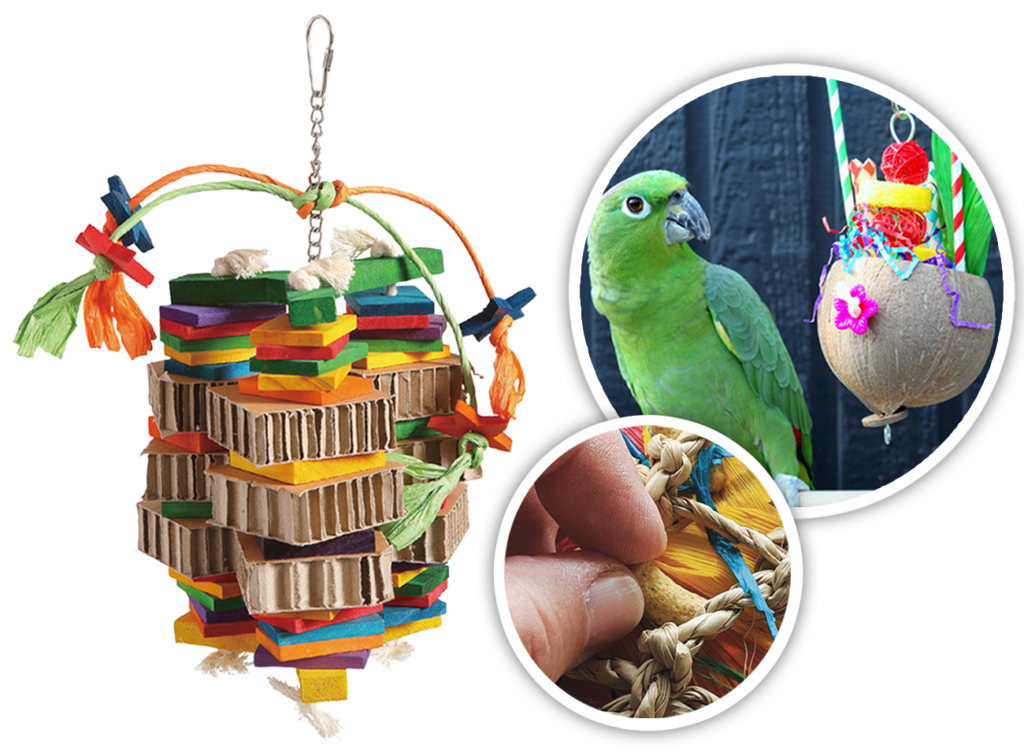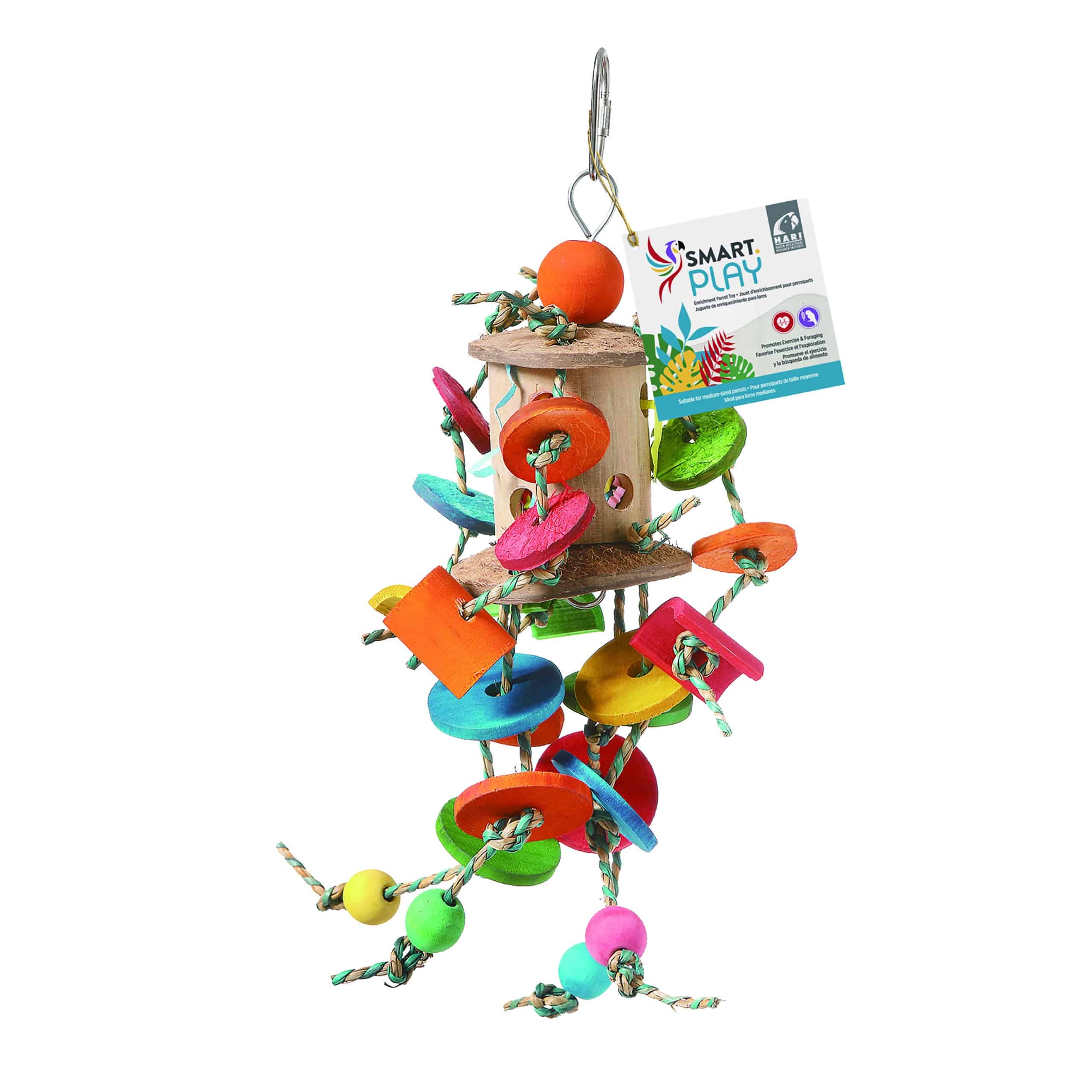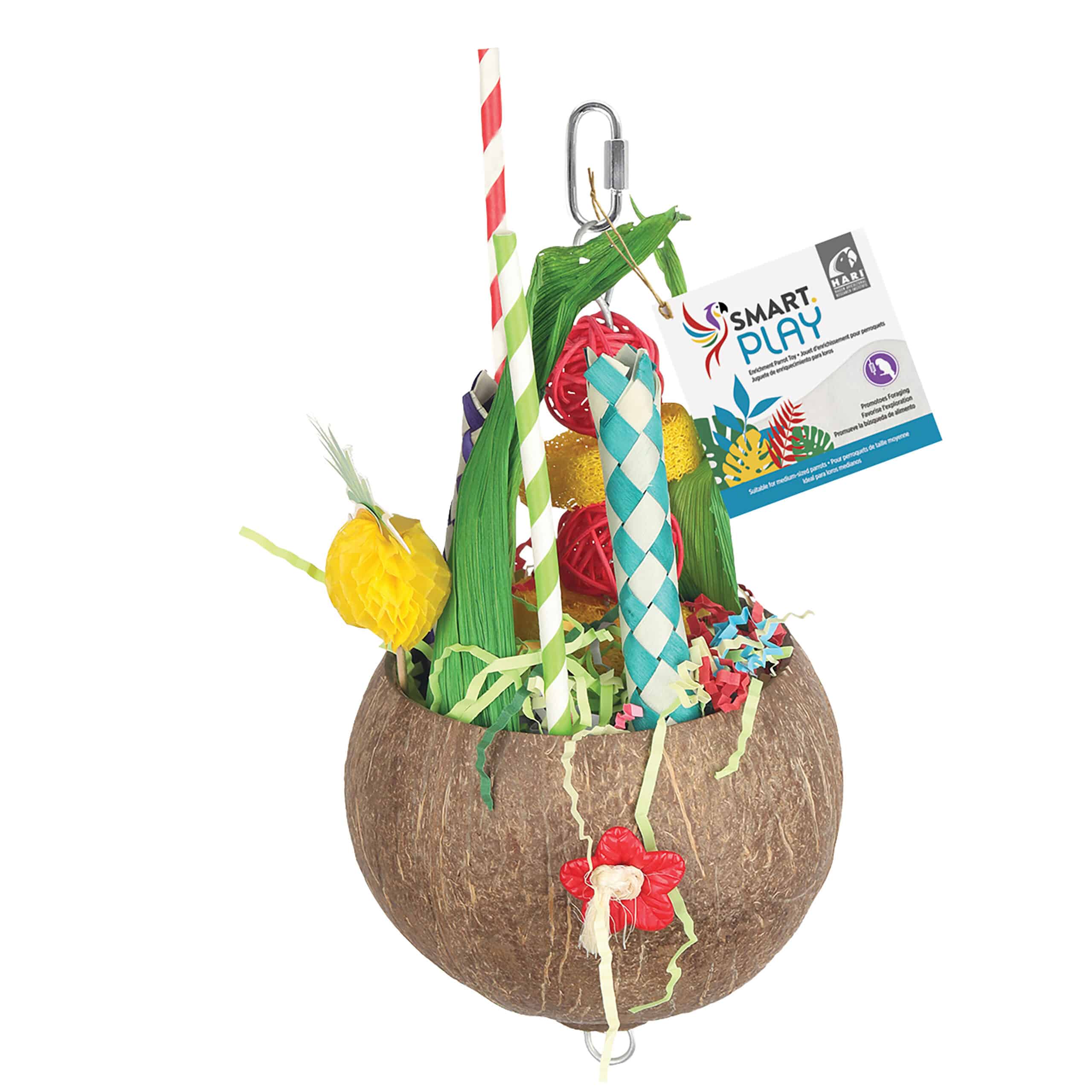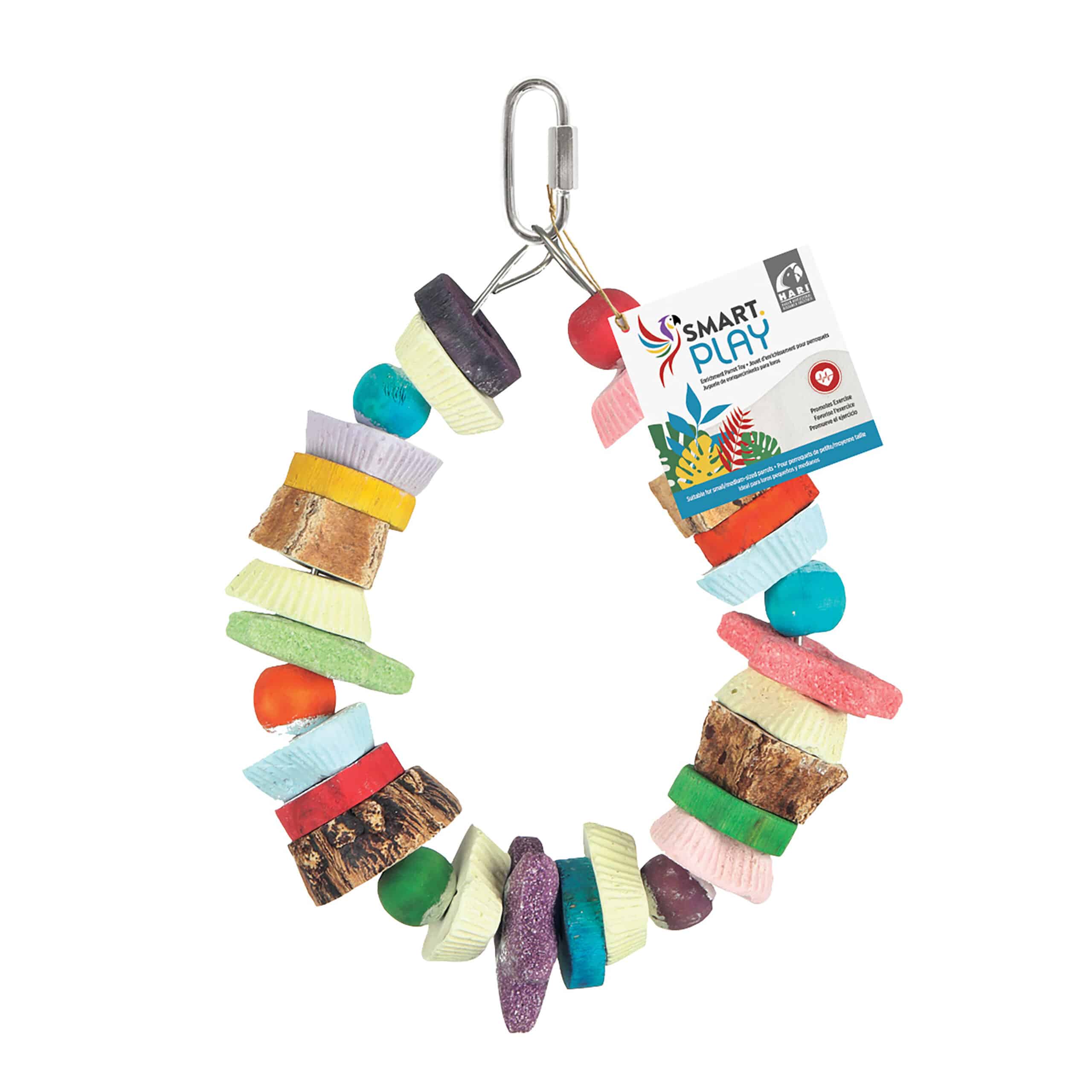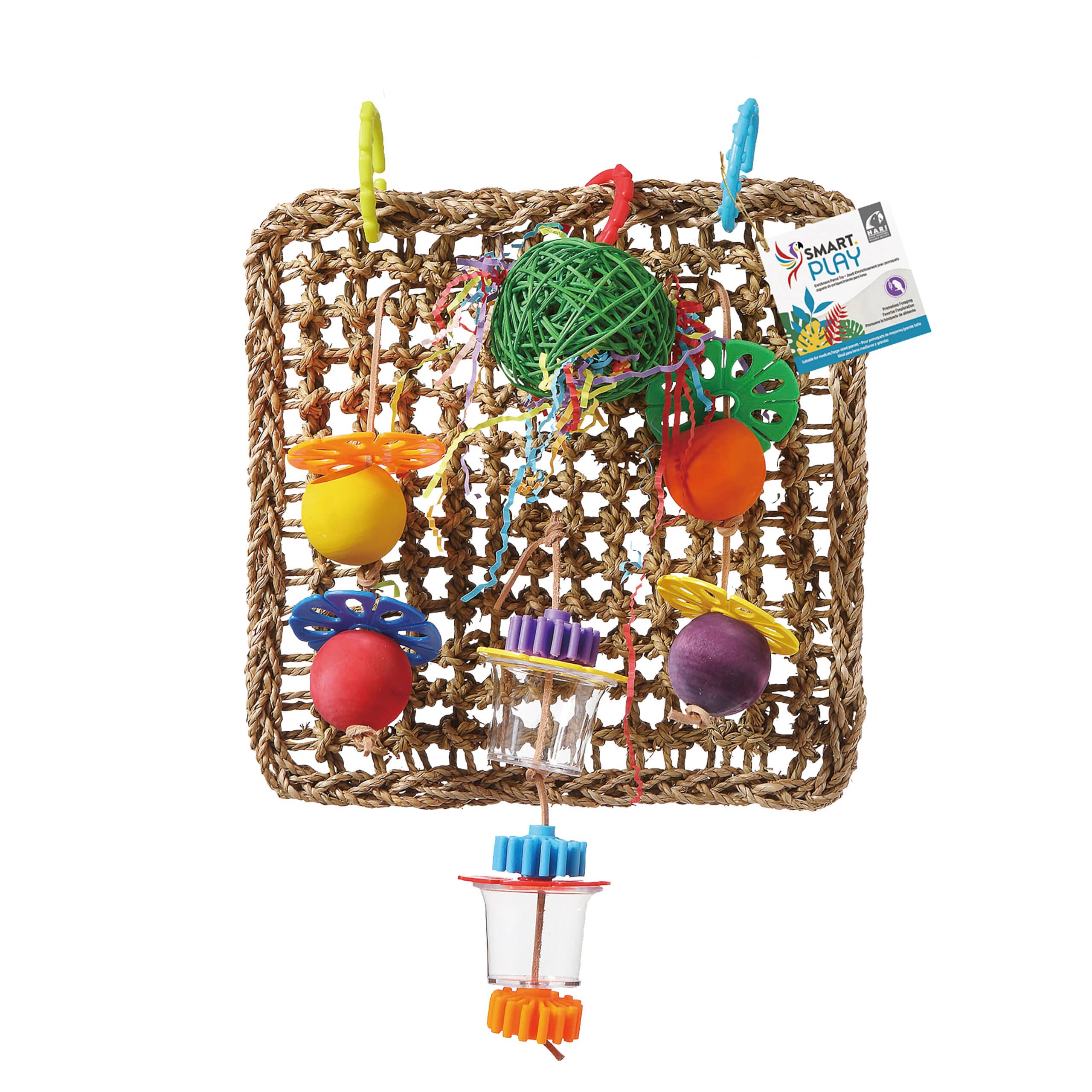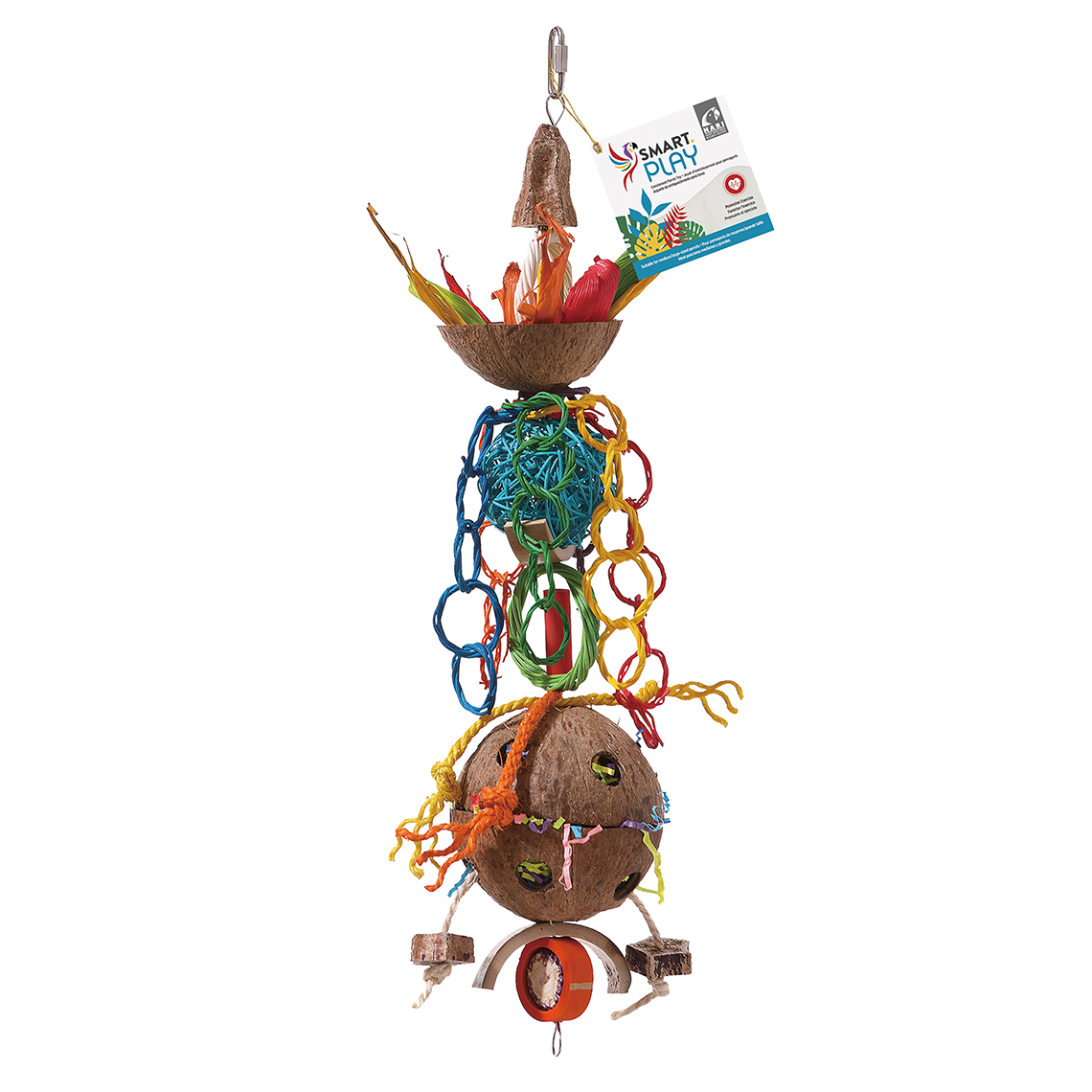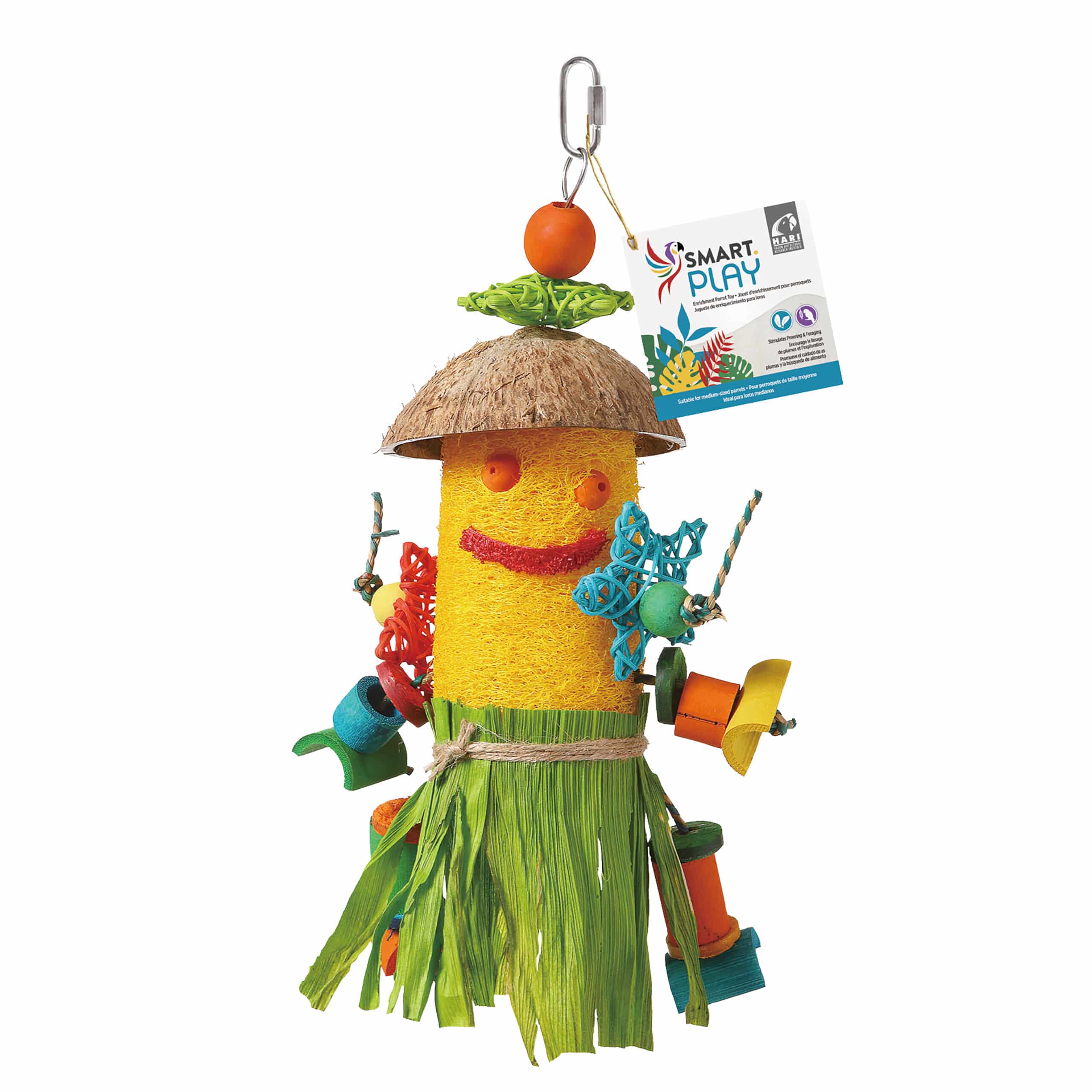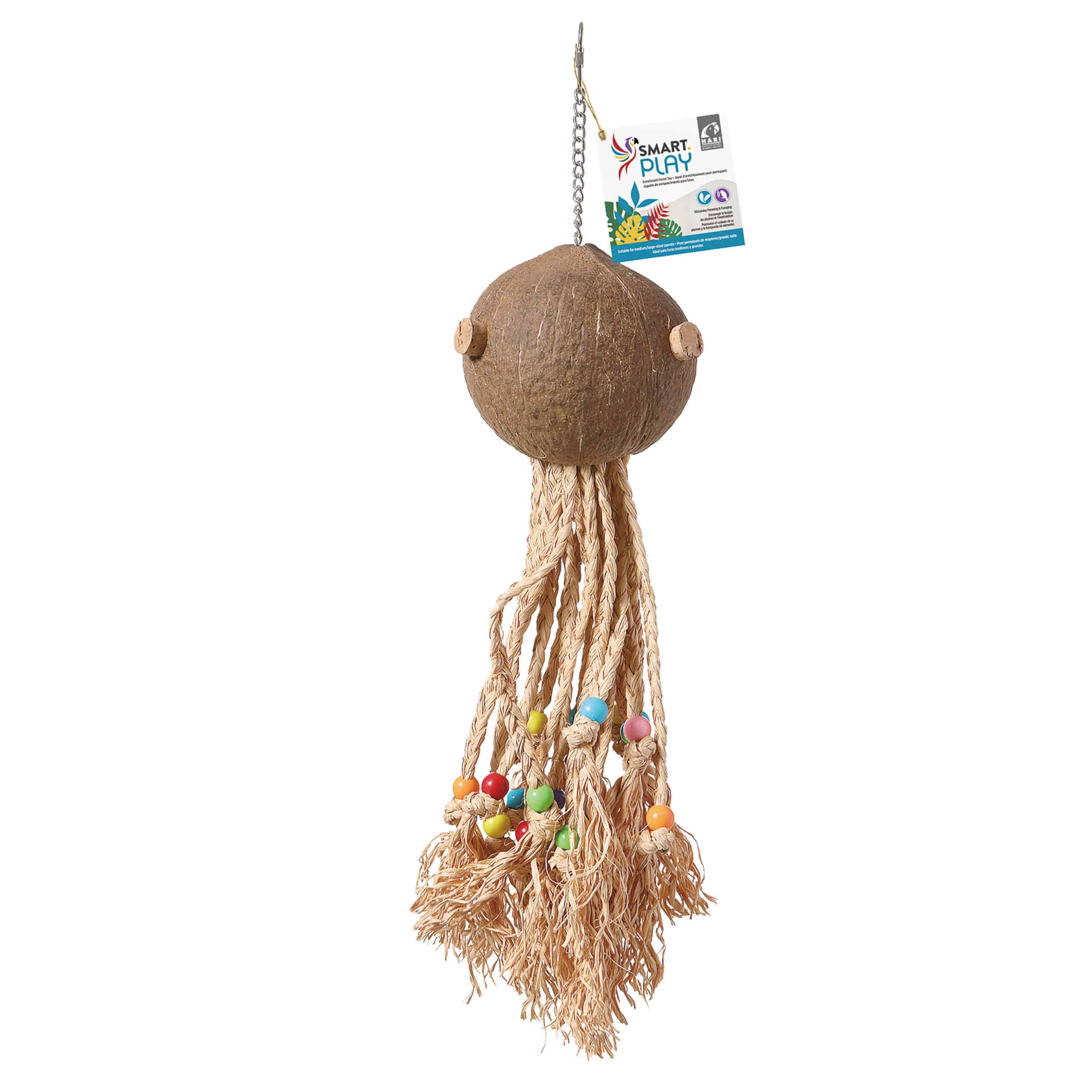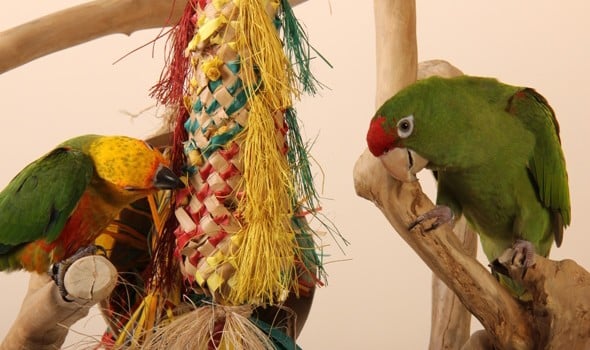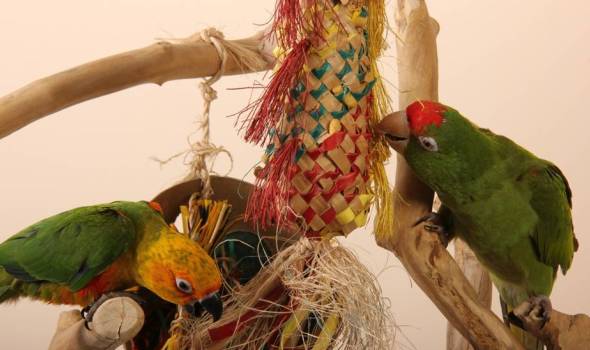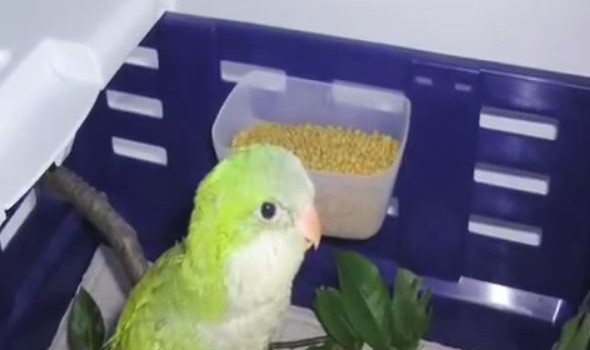Your cart is currently empty!
Available Products
Keep Learning
Choosing the Right Foraging Toys for Your Parrot
Providing appropriate physical and mental stimulation is crucial for the well-being of your pet parrot. One way to do this is by selecting the right foraging toys.
Here are some tips for choosing the best ones:
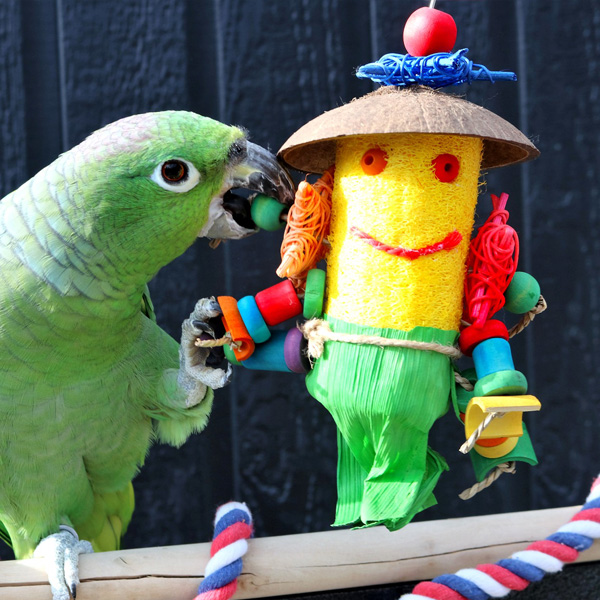
- Ensure that the toys are made from bird-safe materials and designs.
- Consider foraging toys that require the bird to explore, tear, pull, and uncover surprises and treats. This encourages your parrot to use their beak and feet, providing both mental and physical stimulation.
- Keep in mind the size and type of your parrot. Different species of parrots have varying sizes and beak strengths, so it is important to choose foraging toys that are appropriate for your bird’s size and strength.
- Choose toys with different colors, as parrots are attracted to bright colors.
- Look for toys that have a variety of materials such as wood, rope, and leather. This will provide your bird with a range of textures to explore and play with.
- Acrylic foraging devices are sturdy and can endure your parrot, especially if they are an avid and experienced forager.
- Cardboard devices are a great way to introduce your bird to a safe and easily destructible foraging experience, and you can easily squeeze morsels of different shapes and sizes into the corrugated carboard patterns.
HARI Smart.Play Foraging Toys
For parrot owners, providing their feathered friends with an environment that mimics the wild can be a challenge. One of the most important aspects of a parrot’s life in the wild is foraging. In fact, 80% of a bird’s waking hours are spent foraging. This activity is essential for their physical and emotional well-being. Thankfully, creating foraging opportunities for pet birds is not difficult. One way to do this is by using foraging toys such as: HARI Smart.Play Foraging toys. These toys are designed to hold extruded granules, small nuts, and seeds, which the birds can then work to find.
Foraging toys offer a powerful medium for nourishment, play, exercise, and social interaction.
- Toys available in a range of size suitable for all hookbills
- Encourages foraging and preening
- Relieves boredom and helps prevent feather plucking
- Provides mental and physical stimulation
- Helps relieve anxiety by providing entertainment
There are several benefits to using foraging toys for companion parrots. These toys relieve boredom and destructive behavior, improve physical health, and enhance emotional well-being. Additionally, they encourage pet birds to move around and be active, which is important for their overall health. For pet owners, using foraging toys can provide a fun and interactive way to bond with their birds. By hiding food within the toys, caretakers can create a game for their birds to play. This not only provides mental stimulation for the bird, but also strengthens the bond between pet and owner.
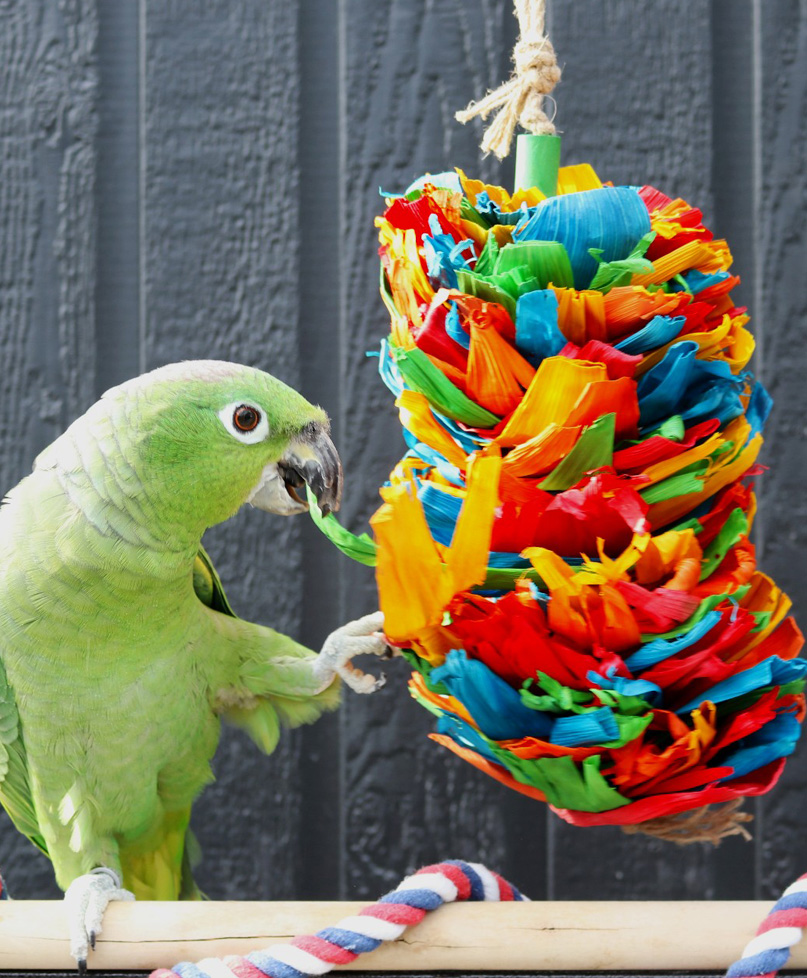
Natural Materials Ensure a Safe and Sustainable Experience
Many of the HARI Smart.Play toys are crafted using a variety of natural materials, including bamboo, sisal, cocona, coconut, seagrass, loofah, willow, pinewood, and sea shells. The colors utilized in these toys are made from non-toxic vegetable dyes, ensuring your bird’s safety while they play. The toys are also equipped with either an appropriately sized pear-shaped or d-shaped quick link.
When it comes to choosing toys for your pet bird, it’s important to prioritize their safety and well-being. That’s why opting for natural materials is a great choice. Here are some additional points to consider:
- Natural materials are non-toxic and safe for your bird to play with. Unlike some plastic toys, which may contain harmful chemicals, natural materials like bamboo, sisal, and coconut are completely safe for your bird to chew and interact with.
- Choosing natural materials is also a sustainable choice. These materials are renewable and biodegradable. By choosing toys made from natural materials, you can reduce your ecological footprint and promote a healthier planet.
- HARI Smart.Play toys are designed with your bird’s safety in mind. Each toy is equipped with an appropriately sized pear-shaped or d-shaped quick link, which ensures that the toy is securely fastened to your bird’s cage and won’t come loose during playtime.
- Non-toxic vegetable dyes are also used to color the toys, ensuring that your bird won’t be exposed to any harmful chemicals. This means you can feel confident that your bird is playing with a toy that’s both safe and enjoyable.
- In addition to being safe and sustainable, the toys are designed for functional play and provide your bird with mental and physical stimulation. Birds are intelligent creatures that require plenty of mental stimulation to stay happy and healthy. These toys are designed to provide your bird with a variety of textures, shapes, and colors to explore, helping to keep them engaged and entertained for hours on end.
For the Health and Well-Being of Your Bird
Foraging Education
If your parrot is unskilled at foraging due to a lack of mentorship, opportunity, or knowledge, don’t worry – you can easily teach your bird these foraging skills. Mentorship plays a key role in learning to forage. In nature, birds mimic and play out what is going on in their environment in the presence of other flock members. Companion parrots can learn from parental guidance, clutch or flock mates, or from a mentoring caretaker. Videos of birds foraging in the wild can mimic a flock and give the assurance and sense of being (confidence and guidance) needed to carry out this behavior. Parrots that flock together and engage in foraging at a site chosen by seasoned flock members are also more likely to engage in this activity, while these mentors keep an eye out for any predator that might pose a threat to the flock.
Choosing suitable foraging activities is influenced by various factors such as the species, the life stage, and the individual foraging experience, skills, agility, curiosity, and physical health. Other contributing factors include your budget as well as your creative skills.
Health benefits of foraging with your bird
Frequently engaging in foraging activities with your parrot as well as observing his behavior and demeanor can help you recognize signs of discomfort or distress. Recognizing your parrots daily playing and foraging habits and skills can reveal preoccupying health concerns. A bird that used to engage that no longer has the strength, confidence, balance or interest can signal a sickness, discomfort or injury (i.e pododermatitis,/bumble foot, central nervous system disorders, an ear infection affecting balance).
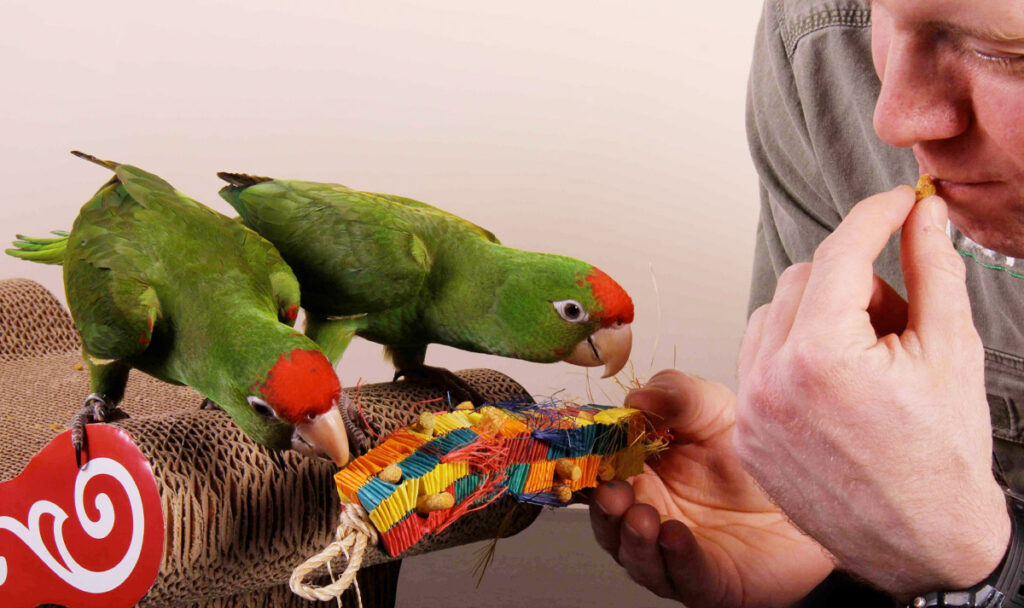
Teaching Your Parrot How to Forage
Introducing your feathered friend to foraging can be an amazing and rewarding experience for you both! Start by creating two simple foraging activities – one for you and one for your parrot. These devices should be easy to use and reveal hidden morsels without requiring too much dexterity, agility, or ingenuity. Make sure your parrot is familiar with the materials, textures, shapes, and colors before you begin. Place granules in both toys and forage through yours, finding morsels and exclaiming with excitement while tasting the treats. Your bird will quickly catch on and may even start without you! Spending quality time during this activity, as well as the sense of accomplishment the bird experiences with its mentor, can be highly beneficial.
Parrots are extremely intelligent and capable of acquiring skills rapidly. Once your bird has acquired basic skills with the introductory foraging education, it can move on to more challenging foraging activities. Intermediate foraging activities, such as toys that require more skills to reach and manipulate, can be introduced. Extreme foraging is the ultimate goal, challenging your bird’s dexterity, balance, intelligence, confidence, fitness, and inquisitive mind.

Engaging Foraging Sessions for You and Your Feathered Companion
As a bird owner, it’s essential to take part in interactive foraging sessions with your feathered friend. This fun activity creates a healthy mentorship-style relationship, especially when dealing with recently re-homed birds. We believe participating in this activity with your bird will be far more rewarding and will help build a positive relationship compared to just giving out treats to gain their affection.
Vigilance is Key
Regularly engaging in activities with your parrot and observing their behavior can help you identify signs of discomfort or distress. Changes in your bird’s playing habits or skills may indicate health concerns. For instance, if your bird once enjoyed playing with foot toys but now lacks the strength, confidence, balance, or interest to do so, it could mean they’re experiencing health issues.
Effective Strategies for Training Your Parrot
If you’re planning to train your parrot, the training area is just as important as the toys. A comfortable, distraction-free space plays a crucial role in helping your parrot remain focused on the task at hand. However, it is important to keep in mind that the training area should not be completely silent, as this may signal danger to your parrot, making it difficult for them to concentrate.
Visual aids can be a valuable addition to any training session. Consider using videos of birds playing with toys and interacting with other birds to help your bird learn how to use these toys. Birds learn by both modeling and mentorship.
Keep training sessions short and simple, primarily one-on-one. Introduce new toys at your bird’s pace and only as long as their attention span allows. Your enthusiasm as a mentor is key to keeping their interest. Vocal praise is also extremely rewarding and can capture your parrot’s attention, even if they are an older bird who has never interacted this way before.
Avoid conducting training sessions with birds that are hungry, tired, or have pent-up energy. To maximize the success and enjoyment of a session, it’s important not to replace your bird’s daily activities, like napping or preening, with a training session.
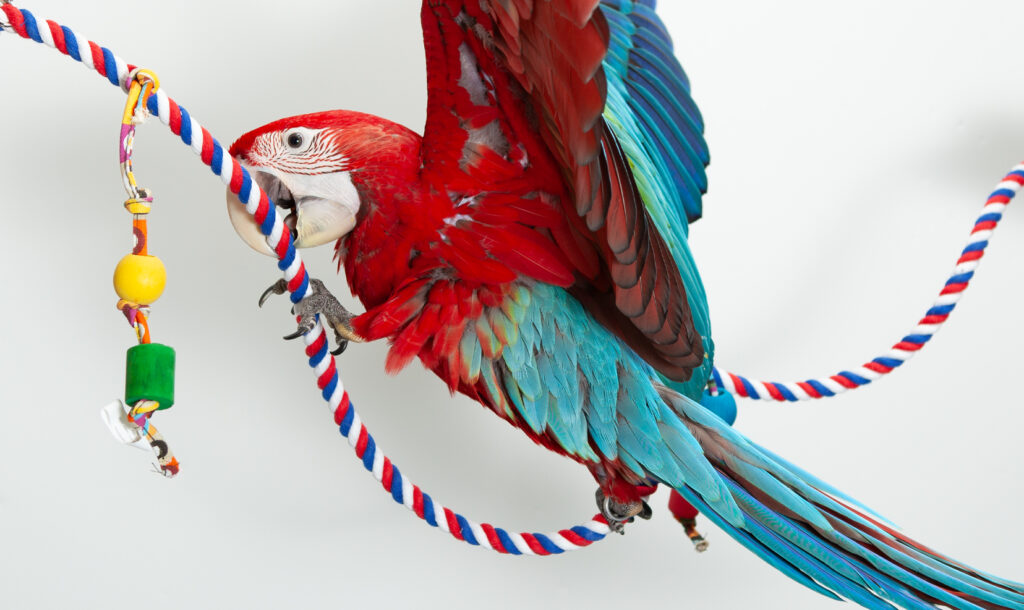
Observing your bird’s interest, dexterity, mental and motor skills while participating in these activities is a key factor in evaluating their health and well-being. It is important to remember that companion parrots are not performing circus or zoo acts. The main purpose of participating in these sessions should be to spend quality time with your feathered companion. Mentorship from the caretaker is crucial to building a healthy relationship. Pride and a sense of accomplishment are the rewards for both you and your parrot. Always remember to respect the potential of each individual and reward based on merit, not just achievement.
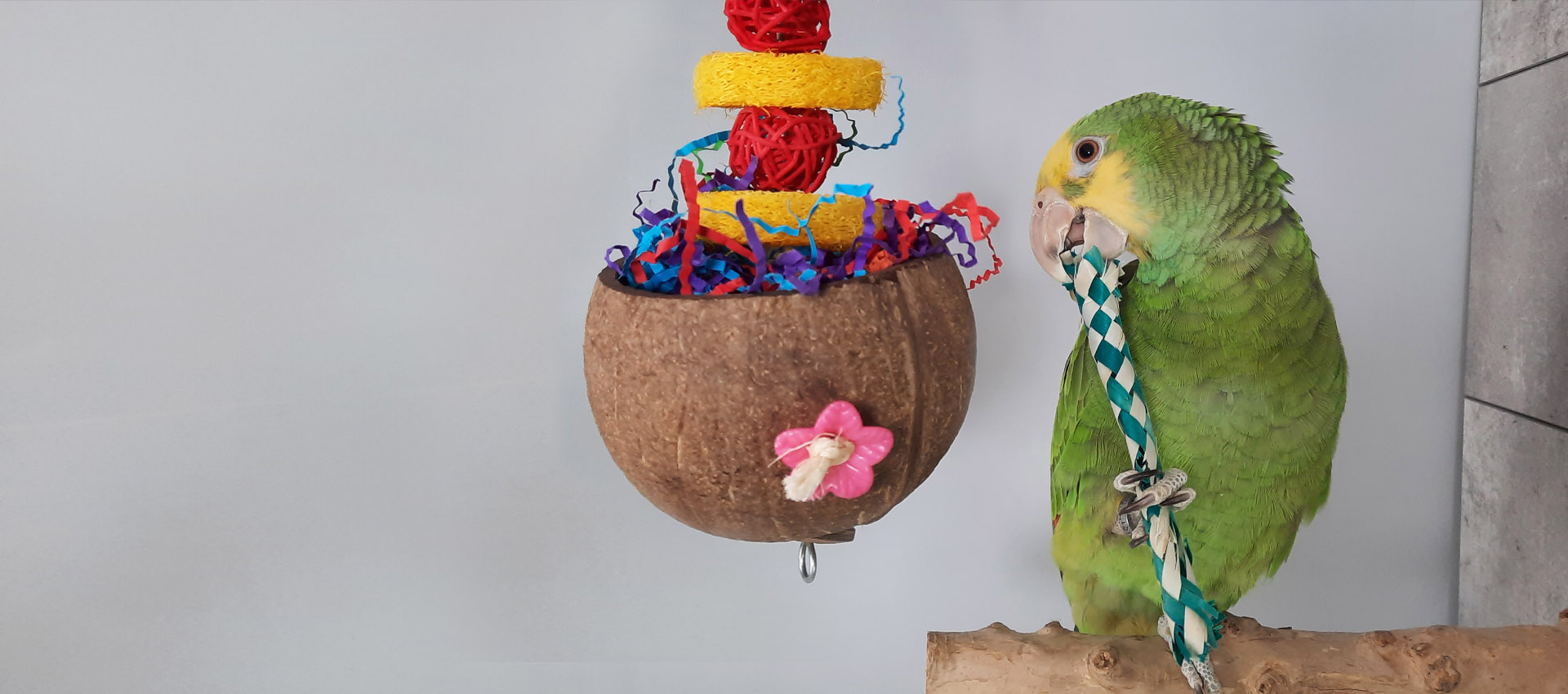
Using Food in Foraging Toys and Activities
Tropican High Performance
Are you wondering what foods to use when engaging your bird in foraging activities? Many bird owners believe that fatty seeds and nuts are the only way to entice their bird to engage in foraging. However, using extruded granules or morsels can be just as effective, if not more so, as they are perceived as a rewarding treat. By incorporating these into foraging activities, your parrot could obtain up to 70% of their extruded diet consumption throughout the day.
At HARI, we not only encourage foraging but also prioritize optimal nutritional opportunities for our parrots. We recommend using Tropican High Performance morsels, which come in various sizes and shapes and are suitable for all bird species. The richness of this formula ensures higher palatability, which can entice even less experienced birds. Surprisingly, larger parrot species such as Goffin cockatoos and macaws enjoy discovering smaller granules, while smaller species like conures enjoy holding and eating the sticks they find embedded in foraging toys. For avid foragers that consume a larger quantity of extruded diet, we suggest using the lifetime formula.
Tropimix Enrichment Diets
Boredom is one of the most common issues that pet bird owners face. It can often lead to self-destructive behaviors such as feather picking, which can be both dangerous and distressing for the bird. However, Tropimix enrichment diets can be a great solution to keep your pet bird engaged and stimulated. Here are some tips on how to use Tropimix foraging activities effectively:
- Foraging activities using Tropimix can be an excellent way to stimulate your bird both mentally and physically. Hiding the seeds, nuts, dried fruits, and veggies, and presenting the food in exciting ways can trigger natural foraging behaviors in your bird, which in turn can help alleviate boredom.
- It is important to note that while Tropimix is an excellent way to boost your bird’s physical and mental activity, it should not replace the bird’s extruded base diet. Ensure that your bird has the motivation to eat their extruded base diet before introducing Tropimix foraging activities.
- When using Tropimix foraging activities, it is essential to explore feeding enrichment with caution. While it is vital to stimulate your bird’s natural foraging behavior, you must ensure that balanced nutrition and eating habits are maintained.
- Avoid placing soft foods such as fruits, veggies, beans, quinoa, sprouts, etc., inside foraging devices as they can perish quickly. These foods are also unhygienic to use in foraging devices or materials, as they can be hard to remove or clean.
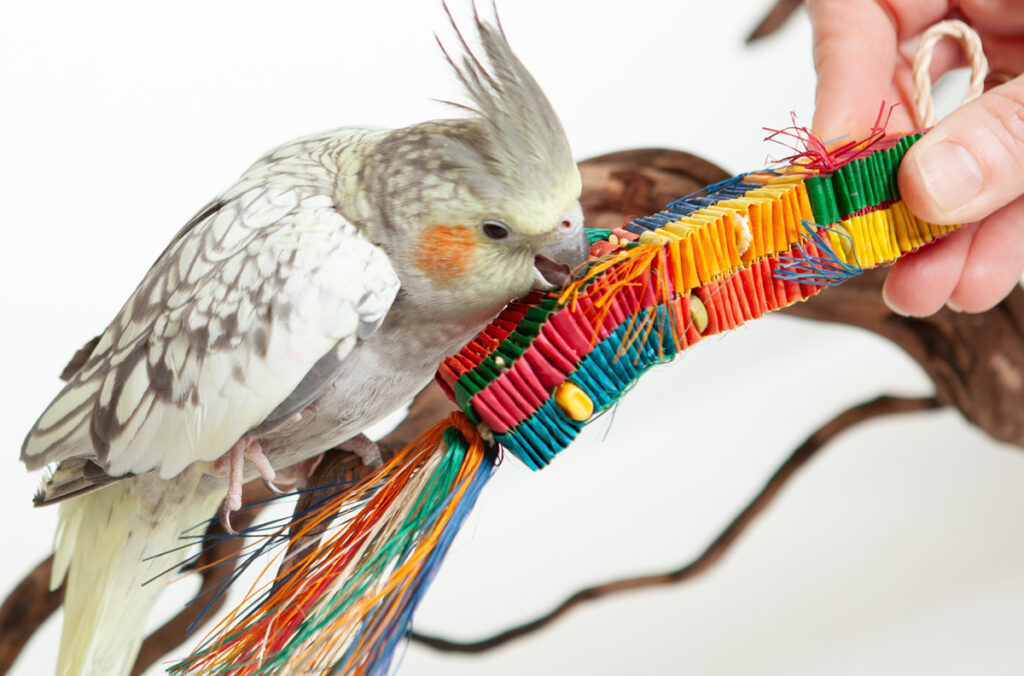
Learn More About Toys
Smart.Play
Exercise Toys
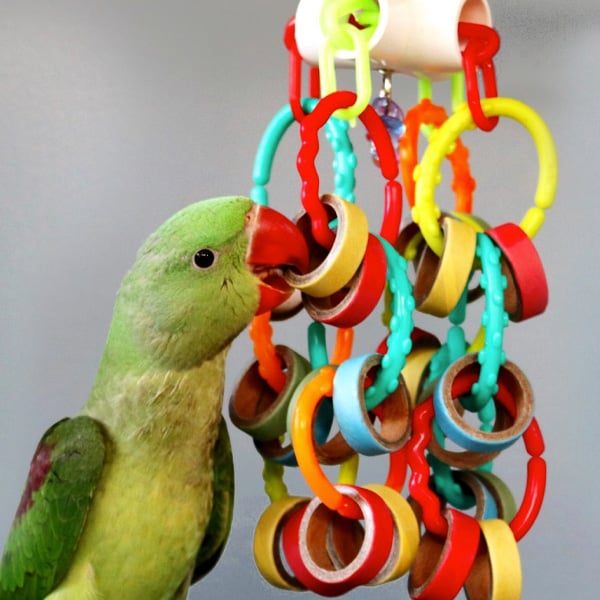
Smart.Play
Preening Toys
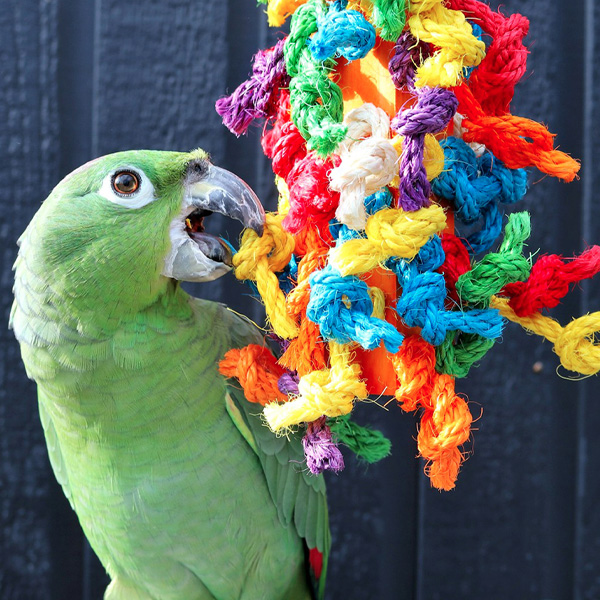
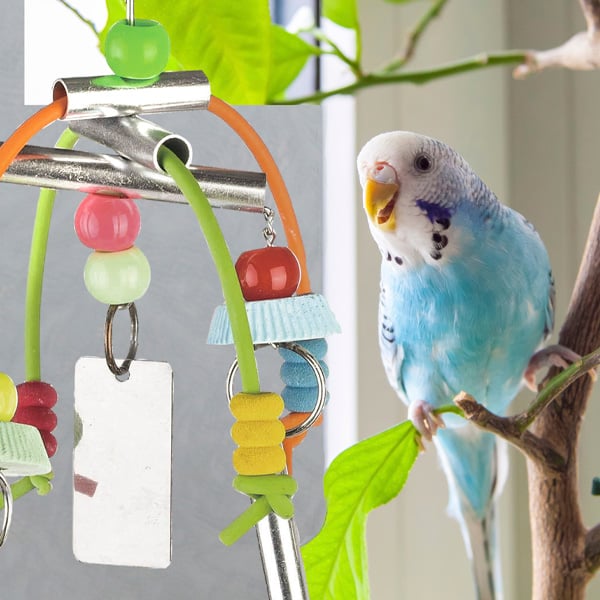
Smart.Play
Foot & Audio Toys

Active.Play
Perches
Related Articles
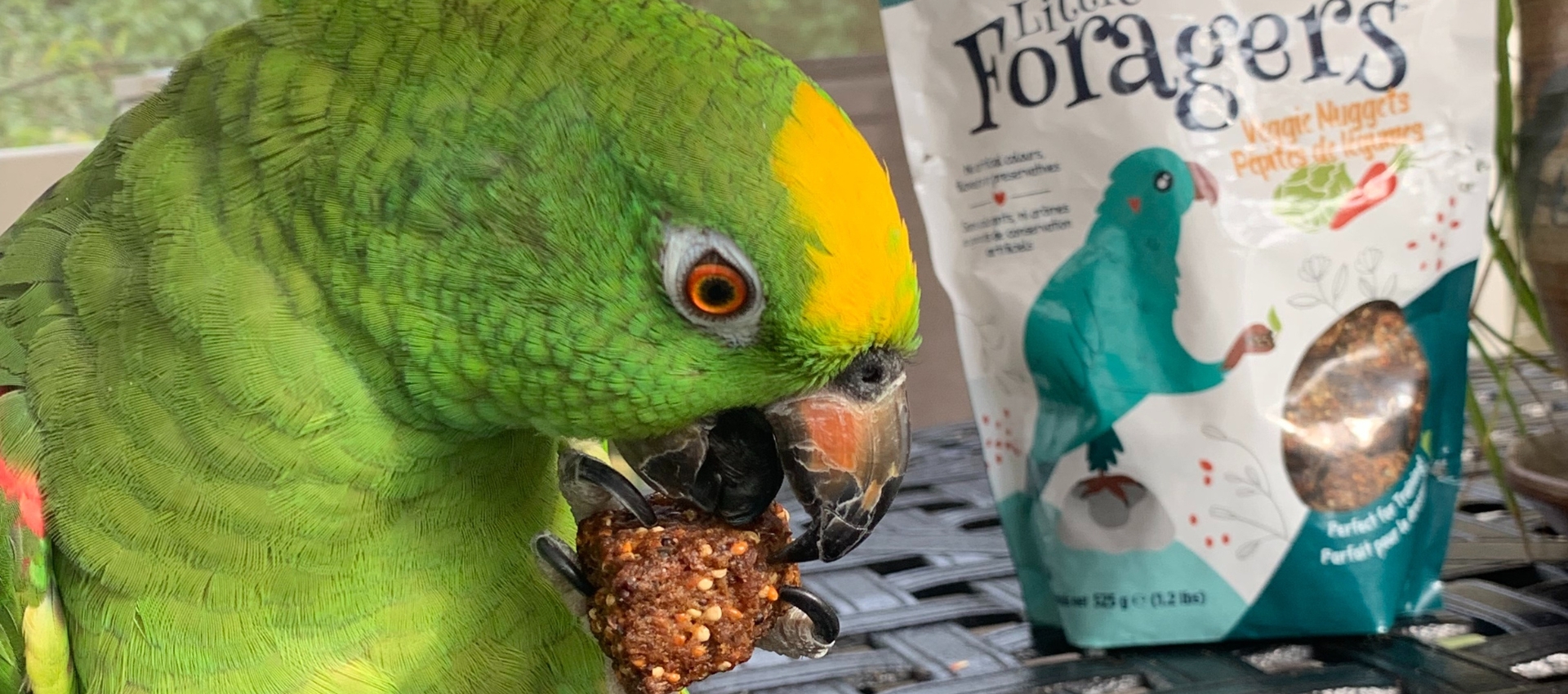
Enrich Your Bird’s Quality of Life
Creating foraging opportunities for your bird is not difficult. When food or treats are incorporated into toys, parrots will stay interested much longer.


